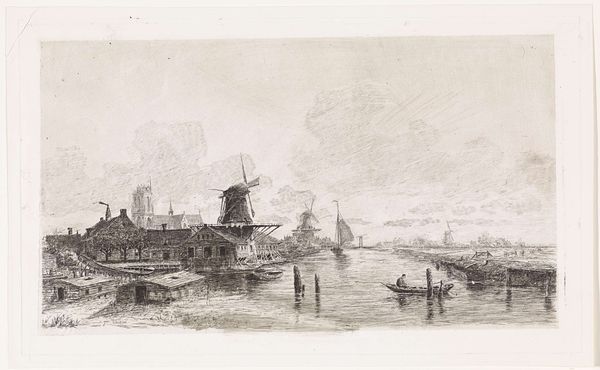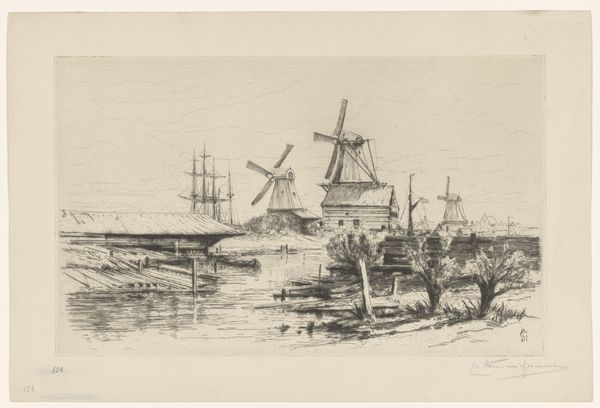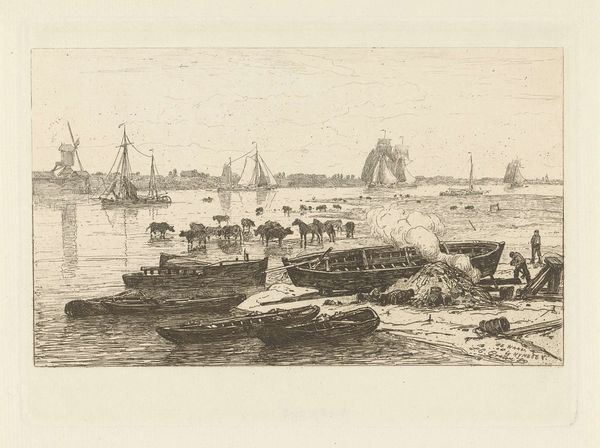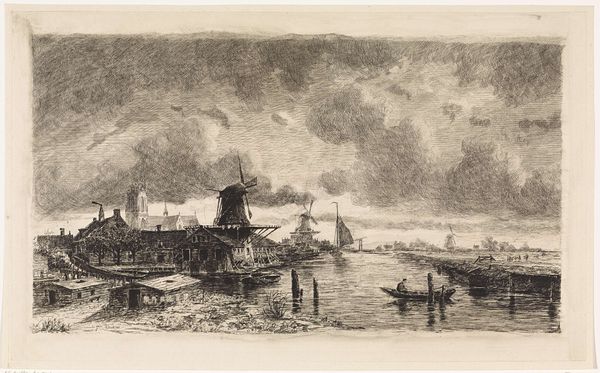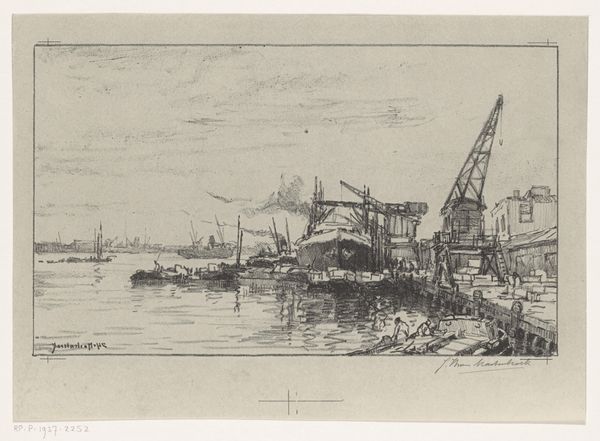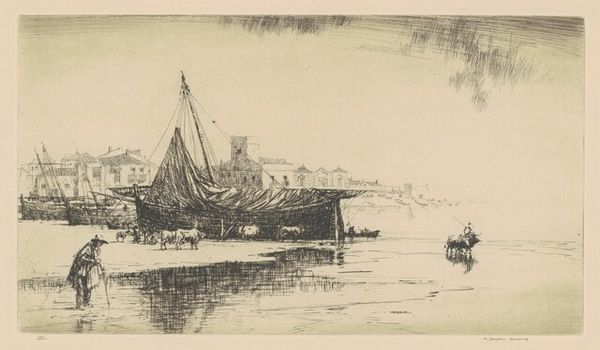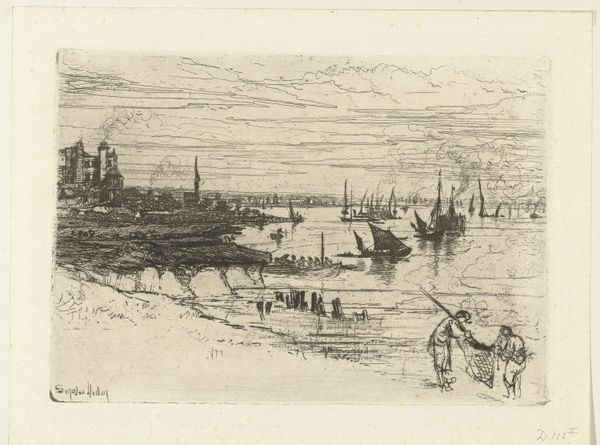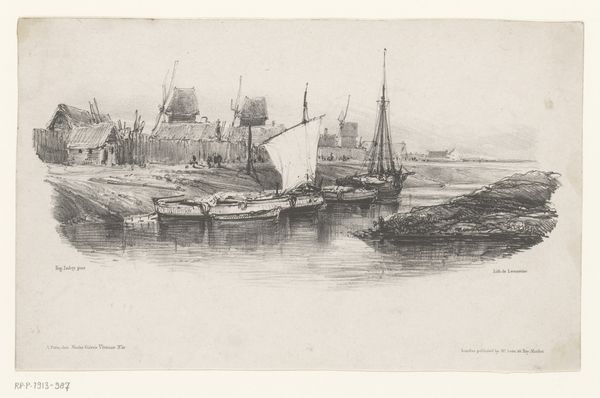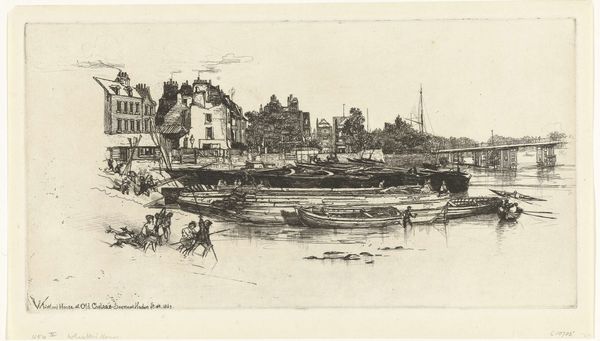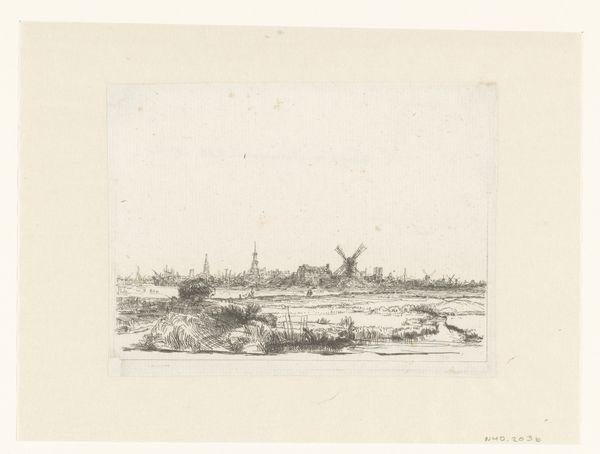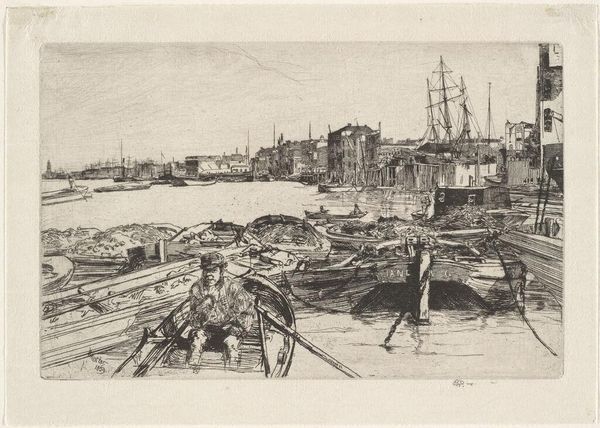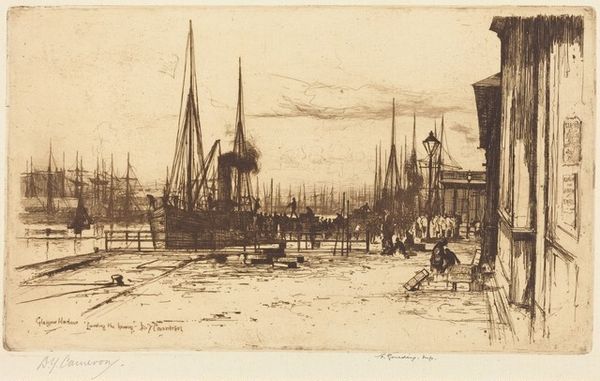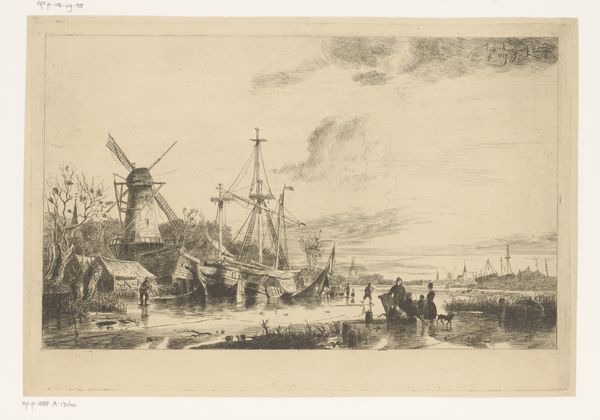
print, etching, woodcut
#
dutch-golden-age
# print
#
etching
#
landscape
#
river
#
etching
#
woodcut
#
cityscape
Dimensions: height 273 mm, width 453 mm
Copyright: Rijks Museum: Open Domain
Elias Stark made this river landscape with village and sawmill. The image’s fine lines were achieved using etching, a printmaking process requiring a metal plate, usually copper or zinc. First, the plate is coated with a waxy, acid-resistant substance called a ground. Then the artist scratches the design into the ground, exposing the metal. When the plate is dipped in acid, the exposed lines are eaten away, creating grooves. The deeper the lines, the more ink they hold. Here, Stark's skillful etching captures the textures of the water, buildings, and foliage with remarkable detail. The subtle variations in line weight and density create a sense of depth and atmosphere. The windmills remind us of the Dutch landscape and a very particular energy source, one that powered the sawing of timber. The artist drew them with precision, highlighting their importance to the local economy and their integration into the natural environment. Looking at the final print, we should appreciate the labor involved in the entire process, from the preparation of the plate to the final impression. Considering the amount of work involved, we can begin to see how traditional distinctions between fine art and craft become blurred.
Comments
No comments
Be the first to comment and join the conversation on the ultimate creative platform.
